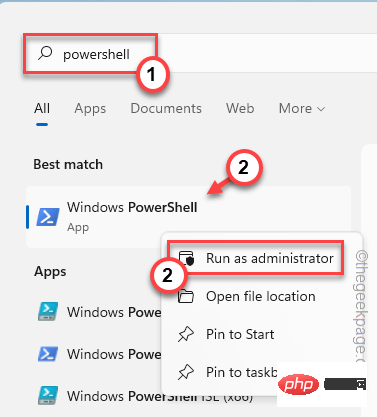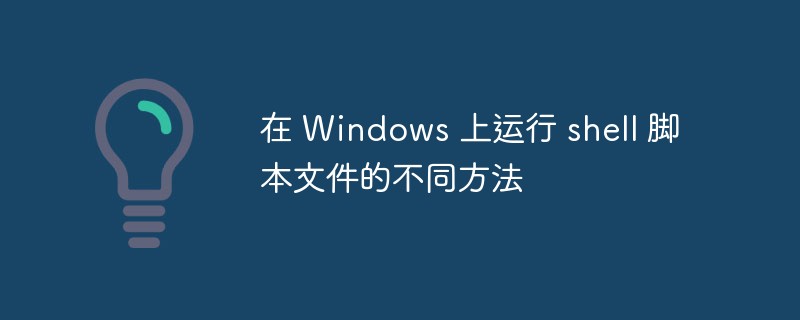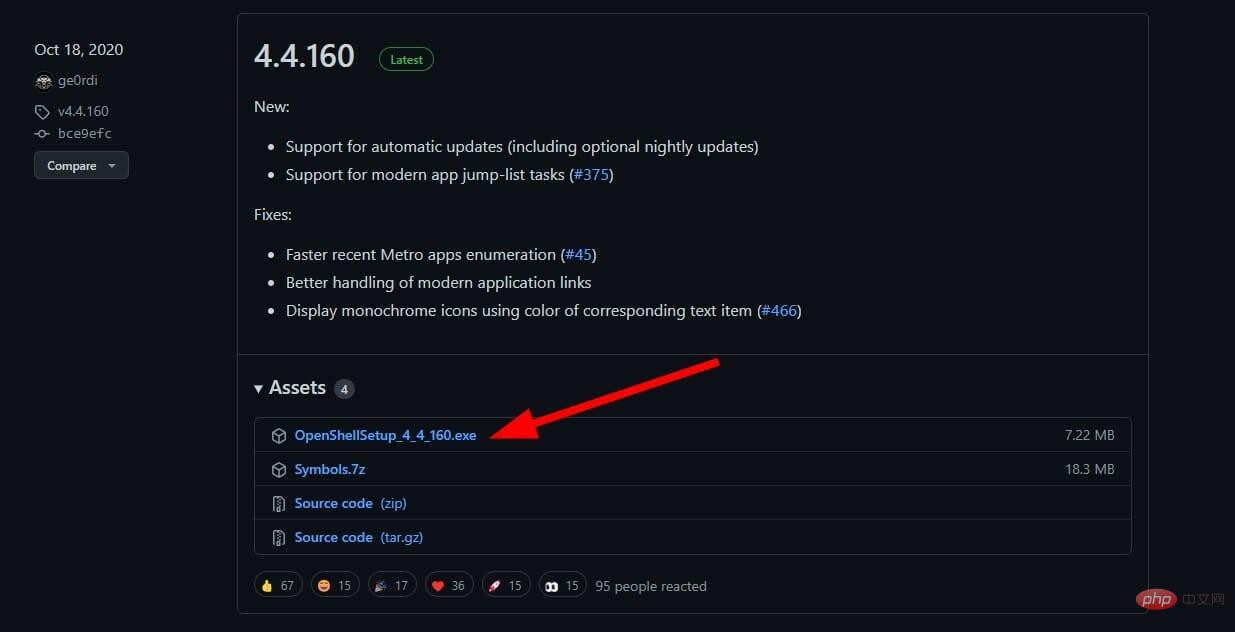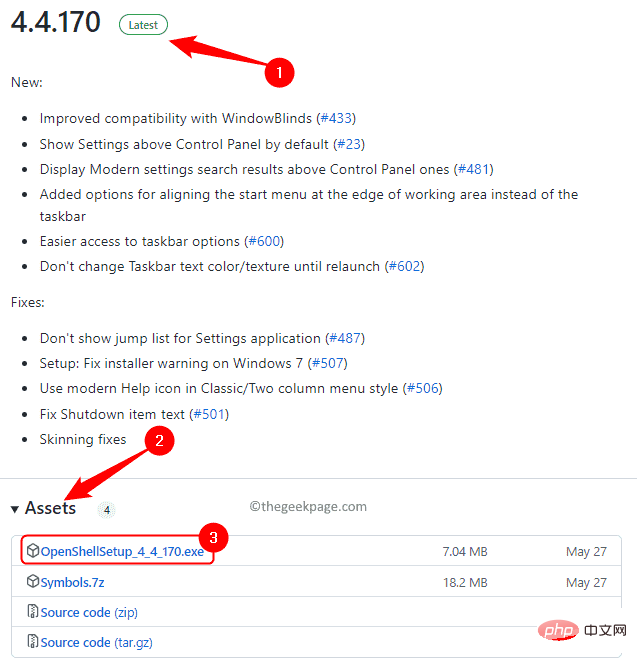 Backend Development
Backend Development Python Tutorial
Python Tutorial Introduction to subprocess module-level methods in python (with code)
Introduction to subprocess module-level methods in python (with code)This article brings you an introduction to the subprocess module-level method in Python (with code). It has certain reference value. Friends in need can refer to it. I hope it will be helpful to you.
subprocess.run()
Run and wait for the instruction specified by the args parameter to complete, and return the CompletedProcess instance.
Parameters: (*popenargs, input=None, capture_output=False, timeout=None, check=False, **kwargs). Except for input, capture_output, timeout, and check, other parameters are consistent with the Popen constructor parameters.
capture_output: If set to True, it means redirecting stdout and stderr to the pipe, and no more stderr or stdout parameters can be passed, otherwise an exception will be thrown.
Input: The input parameter will be passed to the Popen.communicate() method as the standard input of the subprocess, and must be of string (encoding or errors parameters need to be specified, or text is set to True) or byte type. Non-None input parameters cannot be used together with stdin parameters, otherwise an exception will be thrown, and the stdin parameter used to construct the Popen instance will be specified as subprocess.PIPE.
timeout: passed to the Popen.communicate() method.
check: If set to True, a CalledProcessError exception will be thrown if the process execution returns a non-0 status code.
# 源码
def run(*popenargs, input=None, capture_output=False, timeout=None, check=False, **kwargs):
if input is not None:
if 'stdin' in kwargs:
raise ValueError('stdin and input arguments may not both be used.')
kwargs['stdin'] = PIPE
if capture_output:
if ('stdout' in kwargs) or ('stderr' in kwargs):
raise ValueError('stdout and stderr arguments may not be used '
'with capture_output.')
kwargs['stdout'] = PIPE
kwargs['stderr'] = PIPE
with Popen(*popenargs, **kwargs) as process:
try:
stdout, stderr = process.communicate(input, timeout=timeout)
except TimeoutExpired:
process.kill()
stdout, stderr = process.communicate()
raise TimeoutExpired(process.args, timeout, output=stdout,
stderr=stderr)
except: # Including KeyboardInterrupt, communicate handled that.
process.kill()
# We don't call process.wait() as .__exit__ does that for us.
raise
retcode = process.poll()
if check and retcode:
raise CalledProcessError(retcode, process.args,
output=stdout, stderr=stderr)
return CompletedProcess(process.args, retcode, stdout, stderr)
Before python3.5, the three methods call(), check_all(), and checkoutput() constituted the high-level API of the subprocess module.
subprocess.call()
Run and wait for the instruction specified by the args parameter to complete, and return the execution status code (returncode attribute of the Popen instance).
Parameters: (*popenargs, timeout=None, **kwargs). Basically the same as the Popen constructor parameters, all parameters except timeout will be passed to the Popen interface.
Do not use stdout=PIPE or stderr=PIPE when calling the call() function, because if the child process generates enough output to the pipe to fill the OS pipe buffer, the child process will be unable to read data from the pipe. And cause obstruction.
# 源码 def call(*popenargs, timeout=None, **kwargs): with Popen(*popenargs, **kwargs) as p: try: return p.wait(timeout=timeout) except: p.kill() p.wait() raise
subprocess.check_call()
Run and wait for the instruction specified by the args parameter to complete, return a 0 status code or throw a CalledProcessError exception. The cmd and returncode attributes of the exception can view the execution exception Instructions and status codes.
Parameters: (*popenargs, **kwargs). All parameters are passed to the call() function.
Notes are the same as call()
# 源码
def check_call(*popenargs, **kwargs):
retcode = call(*popenargs, **kwargs)
if retcode:
cmd = kwargs.get("args")
if cmd is None:
cmd = popenargs[0]
raise CalledProcessError(retcode, cmd)
return 0
subprocess.check_output()
Run and wait for the instruction specified by the args parameter to complete, and return to the standard output (stdout attribute of the CompletedProcess instance) , the type defaults to byte. The byte encoding may depend on the executed instruction. Setting universal_newlines=True can return a value of type string.
If the execution status code is non-0, a CalledProcessError exception will be thrown.
Parameters: (*popenargs, timeout=None, **kwargs). All arguments are passed to the run() function, but explicitly passing input=None to inherit the standard input file handle of the parent process is not supported.
To capture standard error in the return value, set stderr=subprocess.STDOUT; you can also redirect standard error to the pipe stderr=subprocess.PIPE, accessed through the stderr attribute of the CalledProcessError exception.
# 源码
def check_output(*popenargs, timeout=None, **kwargs):
if 'stdout' in kwargs:
raise ValueError('stdout argument not allowed, it will be overridden.')
if 'input' in kwargs and kwargs['input'] is None:
# Explicitly passing input=None was previously equivalent to passing an
# empty string. That is maintained here for backwards compatibility.
kwargs['input'] = '' if kwargs.get('universal_newlines', False) else b''
return run(*popenargs, stdout=PIPE, timeout=timeout, check=True,
**kwargs).stdout
The subprocess module also provides related functions of the commands module in the python2.x version.
subprocess.getstatusoutput(cmd)
Actually calls the check_output() function, executes the string type cmd instruction in the shell, and returns a tuple in the form of (exitcode, output), output( Contains stderr and stdout) is a string decoded using locale encoding with the trailing newline removed.
# 源码 try: data = check_output(cmd, shell=True, universal_newlines=True, stderr=STDOUT) exitcode = 0 except CalledProcessError as ex: data = ex.output exitcode = ex.returncode if data[-1:] == '\n': data = data[:-1] return exitcode, data
subprocess.getoutput(cmd)
Similar to getstatusoutput(), but the result only returns output.
This article has ended here. For more other exciting content, you can pay attention to the python video tutorial column of the PHP Chinese website!
The above is the detailed content of Introduction to subprocess module-level methods in python (with code). For more information, please follow other related articles on the PHP Chinese website!
 如何在 Windows 11 上安装经典 Shell?Apr 21, 2023 pm 09:13 PM
如何在 Windows 11 上安装经典 Shell?Apr 21, 2023 pm 09:13 PM<p>定制您的操作系统是让您的日常生活更加愉快的绝佳方式。您可以更改用户界面、应用自定义主题、添加小部件等等。因此,我们今天将向您展示如何在Windows11上安装ClassicShell。</p><p>该程序已经存在了很长时间,并允许您修改操作系统。志愿者现在已经开始运营该组织,该组织于2017年解散。新项目名为OpenShell,目前在Github上可供感兴趣的人使用。</p>&a
![Explorer.exe 在系统启动时不启动 [修复]](https://img.php.cn/upload/article/000/887/227/168575230155539.png) Explorer.exe 在系统启动时不启动 [修复]Jun 03, 2023 am 08:31 AM
Explorer.exe 在系统启动时不启动 [修复]Jun 03, 2023 am 08:31 AM如今,许多Windows用户开始遇到严重的Windows系统问题。问题是系统加载后Explorer.exe无法启动,用户无法打开文件或文件夹。虽然,Windows用户在某些情况下可以使用命令提示符手动打开Windows资源管理器,并且每次系统重新启动或系统启动后都必须这样做。这可能是有问题的,并且是由于下面提到的以下因素造成的。损坏的系统文件。启用快速启动设置。过时或有问题的显示驱动程序。对系统中的某些服务进行了更改。修改后的注册表文件。请记住以上所有因素,我们提出了一些肯定会对用户有所帮助
 PowerShell 部署失败并出现 HRESULT 0x80073D02 问题修复May 10, 2023 am 11:02 AM
PowerShell 部署失败并出现 HRESULT 0x80073D02 问题修复May 10, 2023 am 11:02 AM您在运行脚本时是否看到此错误消息“Add-AppxPackage:部署失败,HRESULT:0x80073D02,无法安装该包,因为它修改的资源当前正在使用中。PowerShell中出现错误0x80073D02…”?如错误消息所述,当用户在前一个进程运行时尝试重新注册一个或所有WindowsShellExperienceHost应用程序时,确实会发生这种情况。我们已经获得了一些简单的解决方案来快速解决这个问题。修复1–终止体验主机进程您必须在执行powershell命令之前结束
 Linux快速删除文件末尾行的操作步骤Mar 01, 2024 pm 09:36 PM
Linux快速删除文件末尾行的操作步骤Mar 01, 2024 pm 09:36 PMLinux系统下在处理文件时,有时候需要删除文件末尾的行。这种操作在实际应用中很常见,可以通过一些简单的命令来实现。本文将介绍在Linux系统中快速删除文件末尾行的操作步骤,同时提供具体的代码示例。步骤一:查看文件末尾行在进行删除操作之前,首先需要确认文件的末尾行是哪一行。可以使用tail命令来查看文件的末尾行,具体命令如下:tail-n1filena
 在 Windows 上运行 shell 脚本文件的不同方法Apr 13, 2023 am 11:58 AM
在 Windows 上运行 shell 脚本文件的不同方法Apr 13, 2023 am 11:58 AM适用于 Linux 的 Windows 子系统第一种选择是使用适用于 Linux 或 WSL 的 Windows 子系统,这是一个兼容层,用于在 Windows 系统上本地运行 Linux 二进制可执行文件。它适用于大多数场景,允许您在 Windows 11/10 中运行 shell 脚本。WSL 不会自动可用,因此您必须通过 Windows 设备的开发人员设置启用它。您可以通过转到设置 > 更新和安全 > 对于开发人员来完成。切换到开发人员模式并通过选择是确认提示。接下来,查找 W
 超硬核!11个非常实用的 Python 和 Shell 拿来就用脚本实例!Apr 12, 2023 pm 01:52 PM
超硬核!11个非常实用的 Python 和 Shell 拿来就用脚本实例!Apr 12, 2023 pm 01:52 PMPython 脚本部分实例:企业微信告警、FTP 客户端、SSH 客户端、Saltstack 客户端、vCenter 客户端、获取域名 ssl 证书过期时间、发送今天的天气预报以及未来的天气趋势图;Shell 脚本部分实例:SVN 完整备份、Zabbix 监控用户密码过期、构建本地 YUM 以及上篇文章中有读者的需求(负载高时,查出占用比较高的进程脚本并存储或推送通知);篇幅有些长,还请大家耐心翻到文末,毕竟有彩蛋。Python 脚本部分企业微信告警此脚本通过企业微信应用,进行微信告警,可用于
 以下是 Open Shell Windows 11 无法正常工作问题的修复Apr 14, 2023 pm 02:07 PM
以下是 Open Shell Windows 11 无法正常工作问题的修复Apr 14, 2023 pm 02:07 PM无法在Windows 11上运行的 Open shell 并不是一个新问题,并且自从这个新操作系统问世以来一直困扰着用户。Open-Shell Windows 11 不工作问题的原因并不具体。它可能是由程序中的意外错误、病毒或恶意软件的存在或损坏的系统文件引起的。对于那些不知道的人,Open-Shell 是 2017 年停产的 Classic Shell 的替代品。您可以查看我们的教程,了解如何在 Windows 11 上安装 Classic Shell。如何替换 Windows 11 的开始菜
 如何安装 Open Shell 以恢复 Windows 11 上的经典开始菜单Apr 18, 2023 pm 10:10 PM
如何安装 Open Shell 以恢复 Windows 11 上的经典开始菜单Apr 18, 2023 pm 10:10 PMOpenShell是一个免费的软件实用程序,可用于自定义Windows11开始菜单,使其类似于经典风格的菜单或Windows7样式的菜单。以前版本的Windows上的开始菜单为用户提供了一种浏览其系统内容的简单方法。基本上,OpenShell是ClassicShell的替代品,它提供了不同的用户界面元素,有助于从以前的Windows版本获取后一个版本的功能。一旦ClassicShell的开发在2017年停止,它就由GitHub志愿者以OpenShell的名义维护和开发。它与Win


Hot AI Tools

Undresser.AI Undress
AI-powered app for creating realistic nude photos

AI Clothes Remover
Online AI tool for removing clothes from photos.

Undress AI Tool
Undress images for free

Clothoff.io
AI clothes remover

AI Hentai Generator
Generate AI Hentai for free.

Hot Article

Hot Tools

SAP NetWeaver Server Adapter for Eclipse
Integrate Eclipse with SAP NetWeaver application server.

EditPlus Chinese cracked version
Small size, syntax highlighting, does not support code prompt function

Dreamweaver Mac version
Visual web development tools

Notepad++7.3.1
Easy-to-use and free code editor

VSCode Windows 64-bit Download
A free and powerful IDE editor launched by Microsoft





